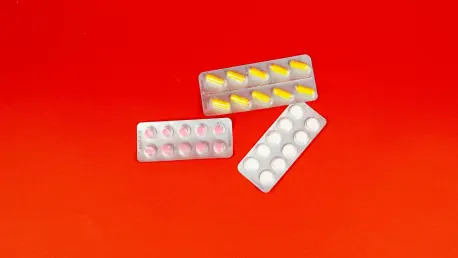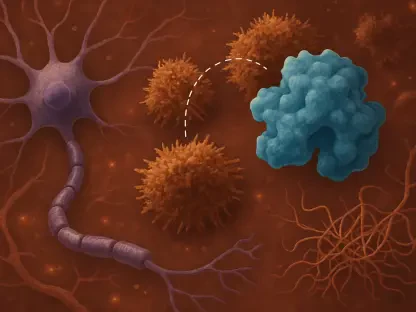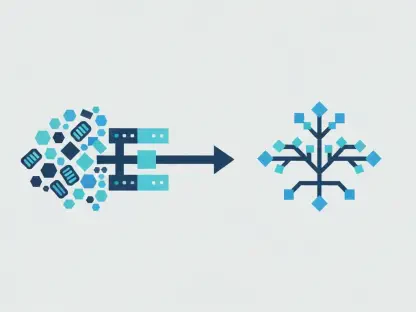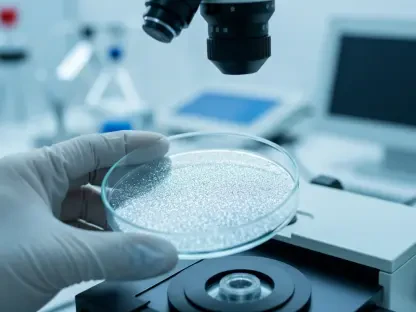Emerging as a groundbreaking innovation in biomedical sciences, Organ-on-Chips (OoC) technology has begun to transform traditional approaches to drug research and development. At the forefront of this revolution, these microengineered devices offer a physiological simulation of human organs, setting a new benchmark as a viable alternative to conventional animal testing. By utilizing microfluidic environments, Organ-on-Chips recreate the intricate architecture and dynamic mechanical cues of biological tissues. This has paved the way for a new era in life sciences where laboratory models not only emulate the form but approximate the function of human organs. The development and adoption of this technology have far-reaching implications, particularly in improving drug discovery processes, refining toxicology assessments, and advancing personalized medicine.
Impact on Drug Discovery and Toxicology
The implications of Organ-on-Chips on drug discovery are profound, given their capacity to deliver more human-relevant data in the preclinical phase. Drug development often faces high attrition rates at late stages, which OoC technology aims to mitigate by providing earlier, reliable insights into drug efficacy and safety. By simulating human physiological responses, these chips dramatically improve the predictive power of drug screens over animal models, which sometimes fail to replicate human-specific drug interactions. This precision enhances the potential for identifying viable therapeutic candidates, streamlining the time and cost associated with bringing new drugs to market. Furthermore, Organ-on-Chips facilitate toxicology research by enabling researchers to assess potential toxic effects under real-world physiological conditions. By using multi-organ chips, scientists can observe systemic effects and cross-organ interactions, providing invaluable insight that traditional toxicology screens might overlook.
Regulatory bodies have started to acknowledge the need for innovative methods beyond animal testing due to increasing ethical concerns and legislative pressures. These agencies are progressively embracing Organ-on-Chips as part of the validation process for new pharmacological substances. Their potential to reduce reliance on animal models is monumental. The chips accommodate testing on human-relevant tissues, helping to predict adverse effects of pharmaceuticals more accurately. This shift isn’t just ethical but raises the efficiency of the drug approval process. Ultimately, industries involved in drug development and toxicology could experience a paradigm shift, as these chips offer a pathway for a comprehensive and humane methodology for drug safety evaluation.
Role in Personalized Medicine and Regenerative Research
Organ-on-Chips are also at the forefront of personalized medicine—a field that aspires to tailor healthcare treatments to individual patient profiles. By integrating patient-specific cells into chips, researchers can observe how different individuals might respond to therapeutic agents before clinical trials. This approach supports the development of targeted therapies, crucial for effective treatment of complex conditions like cancer, where generic treatments may fail due to genetic variability among patients. The rise of personalized medicine relies significantly on the adaptability and realism that Organ-on-Chips provide, enabling more accurate predictions of patient responses.
Regenerative medicine and stem cell research stand to greatly benefit from OoC technology. The chips allow for intricate studies of tissue repair and cell differentiation, fostering insights that might redefine current regenerative treatments. By simulating native physiological conditions, Organ-on-Chips create a conducive environment for stem cells to grow and differentiate, potentially leading to breakthroughs in creating artificial organs or repairing damaged tissues. This capability is crucial in advancing therapies for degenerative diseases, enhancing the promise of regenerative medicine by providing an efficient platform for experimentation and discovery.
Global Trends and Market Dynamics
Geographically, North America and Europe dominate the Organ-on-Chips market, driven by robust research infrastructure and major investments in biotechnology, paired with supportive regulatory frameworks. North America’s leadership is supported by well-established biotech sectors and a proactive approach to adopting innovative technologies. In Europe, stringent ethical standards have curtailed animal testing, fostering demand for alternative methods like OoCs. Market dynamics reveal a growing interest in Asia-Pacific regions fueled by governmental initiatives and burgeoning investments in life sciences, making this region a significant player in future market expansion.
The ongoing innovation within this field is demonstrated by the creation of multi-organ chips, which simulate systemic human responses more accurately. The convergence of Organ-on-Chips with developments in artificial intelligence and machine learning further indicates a data-rich environment conducive to predictive modeling. By leveraging AI, researchers can analyze complex data sets that emerge from OoC tests, enhancing the understanding of drug interactions and disease pathways. Efforts towards miniaturization and automation are also notable, promising cost-efficiency and scalable manufacturing processes that could democratize access to this advanced technology.
Challenges and Future Prospects
Organ-on-Chips (OoC) significantly impact drug discovery by providing human-relevant data during the preclinical phase. Traditionally, drug development faces high failure rates in later stages, but OoC technology seeks to change that. By offering early, reliable insights into a drug’s effectiveness and safety, they reduce reliance on animal testing, which often doesn’t mimic human-specific drug interactions accurately. These chips simulate human physiological responses, enhancing the success of drug screenings and making the drug development process more efficient and cost-effective. Additionally, they revolutionize toxicology research by allowing scientists to test for potential toxic effects under real-world conditions. Multi-organ chips enable the study of systemic effects and interactions between organs, offering insights traditional models miss.
Regulatory bodies, driven by ethical concerns and legislative pressures, now recognize the need for innovative alternatives to animal testing. They’re increasingly incorporating OoC technology into new drug validations due to its potential to predict adverse effects more accurately. This shift not only aligns with ethical standards but also promises to make drug approval more efficient, marking a fundamental change in drug safety evaluation.









